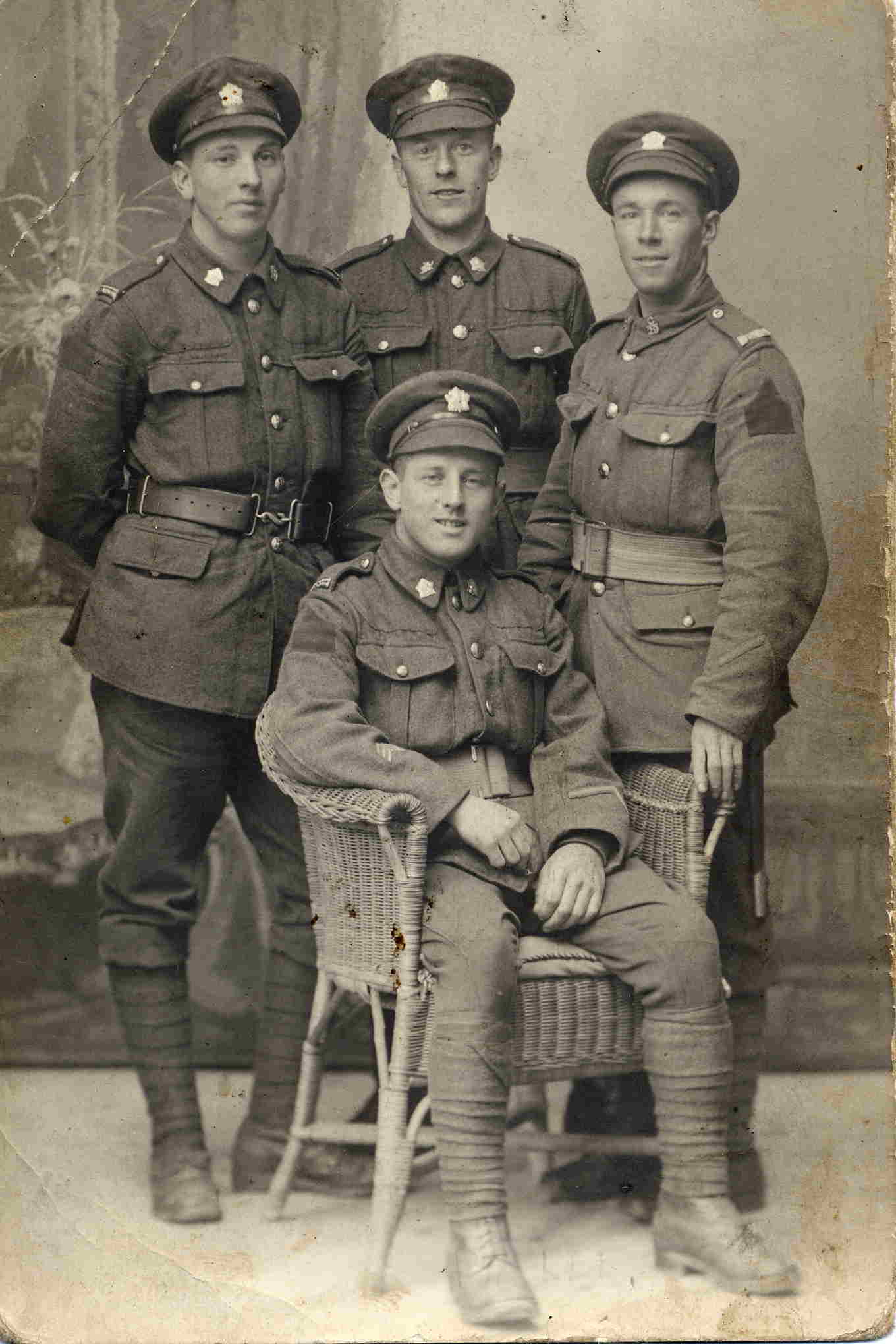"The Last Foursome"
By Ted Hunt - staff writer, Vancouver Courier, published on November 9th, 2007
Founded by soldiers returning from the terrible battlefields of the First World War, Point Grey Golf Club hosts an annual Remembrance Day ceremony of golf, friendship and painful memory.
The boys who returned from the Great War in 1918 were -— like their Second World War counterparts —- determined to reclaim at least some of their lost youth. They had banded together to forma limited company, and purchased the old Henry Mole farm which ran down Blenheim Street from Marine Drive to the North Arm of the Fraser River. They hired Duncan Sutherland of Tain, Scotland, to be their professional, and built themselves the Point Grey Golf and Country Club—with the Mole farm right beside the McCleery farm, it certain was "country."
As the course took shape, the founders did remarkable things for a bunch of fellows who were just trying to forget four terrible years called "the war to end all wars." They had been introduced to the horror of prolonged trench warfare, where dry feet were only a dream, where rats were a constant menace, and control of sewage an impossibility. Even getting out of the rain was difficult unless, illegally, one dug into the trench face like larvae, risking being buried alive if a shell landed nearby. Trench mouth and dysentery were endemic. This was a war where the frontal attack into machine guns was a basic strategy.
The "Oxbridge" powers in England had organized regiments into "village pals" to encourage a surge of national fervour that would guarantee a response to "the great sign-up." The Weybridge Pals, the Penarth Pals, the Henley Pals, and their ilk, charged bravely into waiting guns at 7:30 on a bright July morning to begin the Battle of the Somme. By noon there were 57,470 casualties, with thousands of young Englishmen lying tangled in the barbed wire.
After four years of this kind of mismanagement, Britain was a country of villages devoid of youthful manhood.
The Point Grey founding fathers had seen friends stumbling through the first grotesque experience of chlorine gas at the battle of Ypres, April 22, 1915. As the poet Wilfred Owen recalled: "Bent double, like old beggars under sacks, knock-kneed, coughing like hags, we curse through gas and sludge."
They had somehow survived even though France and Belgium had been turned into barren moonscapes by the severity of constant, numbing, stupefying, artillery barrage. To forget those images, they threw themselves into work on their new golf course building rock walls and staircases, flower gardens and tees, shaping the fairways and digging sand bunkers instead of trenches. They were home.
Such were the men who left us this lovely park to enjoy. It was built on their sacrifices, and there was I, on Remembrance Day in 1981, surprised to learn they had left a "tontine" -— or special reward for the last survivors of a special group. A bottle of Chivas Regal, purchased in 1922 by comrades with whom they had shared the terrible experiences of the First World War, had been waiting as a farewell prize for the "last foursome," the last surviving veterans of that first bloody conflict.
They struck off down Point Grey’s first fairway, fortified only by the hot rum toddy, and leaned wet shoulders into a slanting rain. Onlookers worried at the sight of these now fragile old warriors buffeted by sharp winds.
George Charlton, 91, of the Canadian Infantry Battalion, was the senior member of this distinguished group; Barney Johnson, 86, of the Canadian Field Ambulance Corps, had finished the war in hospital in Boulogne; Ted Mayon, a sergeant major with the B.C. Regiment was 90; Tom Crighton, who, after joining up at 16 in 1914 had marched across France with Tobin’s Tigers, was now 84. These men would be later known as the "Final Foursome".
All had lived in the filthy trenches of France, and all had gone over the top at the Somme, the Marne, or Paschendale and had lived to remember, although they didn’t want to talk about it. Crighton had fought at all three of these historic battles as well as Ypres and Vimy Ridge, and survived without a scratch, though he almost drowned in the mud and slime when a mortar went off beside him as he ran unbalanced by the heavy pack on his back. Pitched forward, he was buried to the waist, upside down and helpless. Smothering, he felt a hand wrenching to pull him loose, and when he had wiped the muck away from his eyes he could see his rescuer charging ahead toward the enemy. He never got to thank the anonymous Samaritan, bud did live to march into Berlin in 1918. A Scot from Aberdeen, he still remembered vividly his demobilization day when a bureaucrat discovered that, during the four-year nightmare, he had been "overpaid the Sterling equivalent of nine dollars and 35 cents." The bureaucrat demanded Crighton pay it back.

